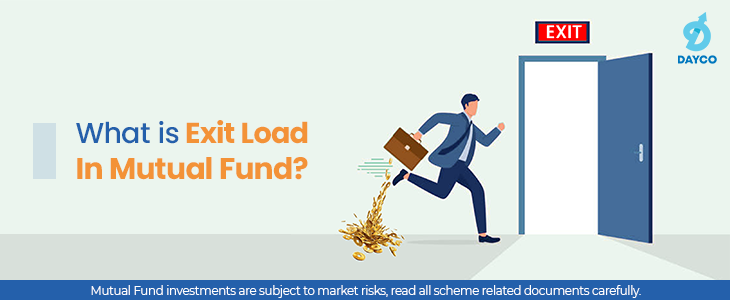Mutual funds are one of the most popular modes of investment. The charges associated with mutual funds are actually reasonably low. However, investors must keep the limited charges in mind while calculating the expected returns from a mutual fund. Exit load is one such charge that’s associated with mutual funds. Different mutual funds have different criteria based on which they set the exit load charge. In this article, we will learn about what exit loads in mutual funds are, how they are charged and how they affect the actual return from mutual funds. Let’s begin.
What Are Mutual Fund Exit Loads?
Exit load is a percentage of the redemption amount charged by mutual funds when you redeem before a specified period ends.
For example, a mutual fund might charge a 1% exit load if you redeem within 30 days of investment. This means that if you invest in that mutual fund on January 1 but, for some reason, redeem the amount on – say – 25th January, then 1% will be deducted from the amount you will receive after the calculation of that day’s NAV and the amount of Units you redeemed.
There are two aspects to exit loads in mutual funds:
- The percentage of exit load being charged
- The time before which the redemption will be subject to the exit load
Both of these vary from one mutual fund to another.
Percentage – While as of now, SEBI hasn’t capped the maximum percentage that can be charged in the form of exit load, most mutual funds don’t charge more than 4%. Even 4% is quite rare. Some mutual funds might charge just 0.1% exit load. Again, there are many mutual funds that do not charge any exit load whatsoever.
Time: How much exit load will your redemption amount be subject to depends on after how many days you redeem. Some mutual funds have a simple policy of charging a 1% exit load if redeemed within a certain number of months after investment. Then there are those mutual funds that might charge a 4% exit load if redeemed within 12 months but 2% if the redemption happens after 12 months but before the completion of 24 months.
Calculation of Exit Load In Mutual Fund That You Invested Using SIP
If you invested in a mutual fund using SIP – instead of a one-time investment, then in that case, the calculation of exit load is a little bit different. You need to divide the mutual fund units that you bought into two categories.”
- Units that have completed the period mentioned in the exit load term
- Units that haven’t completed the period mentioned in the exit load term
So suppose from 10th January 2024 onwards, you invested Rs.1000 per month in a mutual fund that charges exit load if redeemed within 1 year. This means that every month on the 10th, you invest Rs.1000. Now, what happens if you redeem on the 2nd of February 2025? The units that you bought on 10th January 2024 will have completed 1 year. So, redeeming those units won’t trigger any exit load. However, all the other units of that mutual fund that you bought in February, March, April, and so on will not have completed 1 year. Hence, the redemption of those units will be subject to exit load.
The gist of the matter is – exit load is calculated based on the age of the units acquired.
Why Is The Exit Load In Mutual Funds Levied?
Put simply, exit load is charged to discourage investors from redeeming early. This leads to many benefits:
- Since exit load discourages early redemption, it makes investors more disciplined. And in the long term, it helps investors gain wealth by making them stay invested.
- Since exit load discourages early redemption, it makes the mutual fund more stable with lesser outflow of funds. The fund manager can manage the fund in a systematic way with a long-term vision in mind.
|
Did You Know? |
| Although exit load is ‘charged’ by the AMCs, they can’t use the money they get from levying exit loads. The money generated from the exit load should – by law – be put into the respective mutual fund. |
In The End…
Most people invest in mutual funds with a long-term goal in mind. Hence, exit loads become a non-issue for a long-term investor. As for short-term investors, they should be more worried about the short-term capital gains combined with the expense ratio that they need to shell out when they redeem early.
If you have a question, share it in the comments below or DM us or call us – +91 9051052222. We’ll be happy to answer it.
~ Nischay Avichal
















